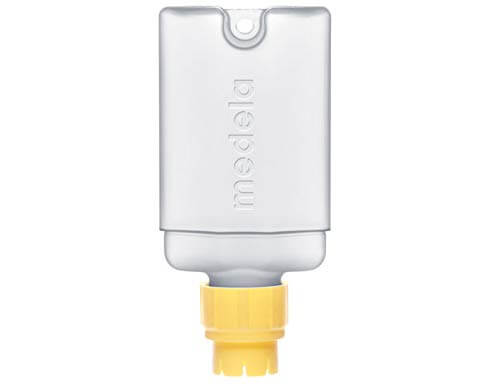Adoptive Breastfeeding - Can You Produce Enough Milk?
Breastfeeding can actually help the adopted child heal; helping him/her feel content and enhancing the bonding experience.

Adoptive breastfeeding is not only possible but includes many advantages. Suppose you are adopting a child that has been abused or taken from temporary parents. In that case, nursing can help the adopted child heal, helping them feel content and enhancing the bonding experience.
Some moms who adopt a baby over six months old have found that breastfeeding helps relax the little one and will encourage a feeling of being wanted and safe.
Moms might need to use an at-the-breast nursing supplementer for some feedings. An SNS will ensure that baby is receiving her breastmilk and the supplement, and at the same time, the mother will be increasing her milk supply.
“I’m not telling you it’s going to be easy. I’m telling you it’s going to be worth it.” - Art Williams.
It might take up to 5 months before being able to produce a full supply of breastmilk. Some moms never develop a full supply, but every little bit of milk counts.
Successful adoptive nursing may be influenced by breastfeeding problems, such as bad latch, wrong positioning, and insufficient feeding or pumping.
Adoptive nursing allows Mom to enjoy the physical closeness, skin-to-skin contact, and mother-infant connection as if it were her biological child.

How Does Relactation Work?
When a baby suckles a mother's breasts, it triggers milk production, so the mother does not depend on pregnancy to breastfeed.
When you stimulate the breast enough, your "milk hormones" (prolactin levels) will increase, encouraging lactation.
Stimulating lactation in mothers who have been pregnant previously is easier. This is because their breasts have already undergone a growth process in which the ducts and alveoli become lactation-ready.
“Ah, the joy of suckling! She lovingly watched the fishlike motions of the toothless mouth, and she imagined that with her milk there flowed into her little son her deepest thoughts, concepts, and dreams.” - Milan Kundera, Life is Elsewhere.
What if I Don't Produce Enough Breastmilk?
It doesn't matter. You can supplement breastmilk with formula or have a baby on the breast with only formula. With a supplemental feeding system, your child will benefit from bonding with you and oral development, which occurs while nursing.
Instead of using formula, you could always contact a breastmilk bank.

What is a Supplemental Feeding Device? How Does it Work?
A nursing supplementer consists of a silicone tube attached to a milk reservoir. The reservoir is filled with formula or with breast milk. The tube is taped to your breast so that the tip of the tube comes out past your nipple. The baby then sucks on the tube and receives the milk in the reservoir. This stimulates the breast, which causes you to produce more milk.

To Induce Lactation for Adoptive Breastfeeding
- Pumping in between feedings ~ You will need to pump at least six times a day for ten minutes on each breast (An electric, hospital-grade pump is the best to use)
- Fenugreek, Anise, Fennel, Alfalfa, and many other herbs can help induce lactation.
- Staying hydrated is extremely important. Drink at least eight glasses of water daily.
- Drugs that increase breastmilk production, such as Metoclopramide and Domperidone, can assist, in developing a more abundant milk supply, faster.
- Taking hormones such as Oestrogen and Progesterone may also help.
Step-by-step guide for inducing lactation.

How to Increase Lactation
- Pump after each feeding.
- Eat a good, well-balanced diet.
- Breast massage and nipple stimulation will help. Breast compression during breastfeeding can also help drain the breast, increasing milk production.
- Remember that a pump can never remove the same amount of milk as a baby. So, always breastfeed your baby first. Afterward, you can express.
- Always breastfeed skin-to-skin when possible; this will get your milk flowing and improve the bonding process. Kangaroo mother care is recommended.
- Stay away from using a pacifier. Pacifier use takes attention away from the breast. A pacifier could get in the way of your infant's ability to latch on. This could lead to many breastfeeding problems.
- Try waking your baby at least twice at night to breastfeed.
- Increase your milk supply with lactogenic foods and galactagogues.
- Wearing and nursing your little one in a sling will promote bonding and will boost your supply.
“While breastfeeding may not seem the right choice for every parent, it is the best choice for every baby.” - Amy Spangler.
What About Nipple Confusion?
If your baby is accustomed to drinking out of a bottle, they might not want to breastfeed.
Finger feeding is something that some adoptive Moms have found works to prevent the frustration of breast refusal in the beginning. The baby will continue to consume breast milk while slowly being weaned onto the breast.

The Tushbaby Hip Carrier
With its ergonomic design and comfortable waistband, Tushbaby provides optimal support for you and your baby. Say goodbye to shoulder and back pain from traditional carriers, as Tushbaby evenly distributes your baby's weight, relieving strain and promoting better posture.
How to Get a Baby to Accept the Breast
- The earlier Mom starts adoptive breastfeeding, the better. If possible, be there immediately after birth; begin nursing the same day.
- Using a Lactation Aid (Lact-aid) / supplemental feeding device can encourage the baby onto the breast.
- Many mothers have successfully started breastfeeding their adopted babies at six months, so it is possible.
”when people say that breast-feeding is ‘free,’ I want to hit them with a two-by-four. It’s only free if a woman’s time is worth nothing.” - Hanna Rosin.
Breastfeeding the Adopted Baby While You Are Already Breastfeeding Another Child.
Some mothers still nursing their babies adopt a child and wonder whether the milk will be substantial enough for a newborn.
Although you will not produce colostrum for your adopted baby, breastmilk is still superior to formula. Breastmilk contains immune protection, growth factors, and gut protection and is much easier for a baby to digest.
With adoptive nursing, you must get as much support as possible. Try talking to other adoptive breastfeeding moms.
A mother who would like her adopted child to receive all the benefits of breast milk but is incapable of nursing might want to consider a milk bank.
Top Lactogenic Foods List
Header image by Rodrigo Pereira on Unsplash
